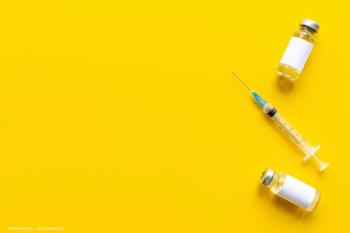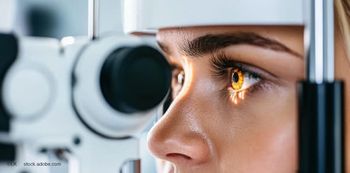
Can glaucoma patients benefit from cell therapy approach?
Sustained delivery is needed to ensure that patients do not have to remember to take their medication every day.
The future of
Delivering the Bryan St. L. Liddy Lecture on the topic of the future of
Related: Reshaping medical treatment of glaucoma management
“If I quit my career without having gotten rid of eye drops, then I will have failed,” Dr. Quigley told symposium attendees. “We need sustained delivery in some form, so patients do not have to remember to take something everyday. Sustained delivery of IOP drugs will get around a lot of problems.”
One of the advantages of sustained delivery tr with patients, according to published research, which showed that
Patient adherence
In one study, individuals randomly selected to receive reminders were more adherent to their therapy than those who were not. They increased adherence from 53% to 64% (P < .05). However, there was no statistical change amongst the 32 participants in the control group. JAMA Ophthalmol.2014 Jul;132(7):845-50.
Another innovation is the Kali Drop device, a wireless monitoring device that provides accurate adherence monitoring, uses telephone feedback, and sends data to an ophthalmologist’s office in real time.
“It will pop up on your screen if they (patients) have not touched their drops,” said Dr. Quigley.
Related:
Identifying progression
Identifying patients who will experience catastrophic worsening, and ruling out those who will not, can be done by modifying the frequency with which visual field tests are conducted, according to Dr. Quigley.
“They represent under 10% of all patients, but we need to identify them as rapidly as we can,” Dr. Quigley explained.
Conducting an annual visual field test is not sufficient to identify patients who will have rapid progression of disease, underlined Dr. Quigley.
“If you will do a (visual) field (test) a year, it will take you four or five years to detect the patient is worsening, and if they are one of these catastrophic worsening people, by then, the horse is already out of the barn,” he said.
Dr. Quigley routinely performs five field tests in the first 18 months with a new patient, as well as measuring
Related: Looking beyond IOP when managing glaucoma patients
“It is well worthwhile and I explain to the patient why we are doing this, that some people get rapidly worse,” he said. “I also explain that at the end of doing this series of tests, we will know that patient is one of the people who will not get worse very fast at all and that patient can be re-assured.”
However, better biomarkers are needed to reveal if patients with
Biomechanical changes
One of the avenues of research to help uncover which patients will worsen quickly and which will not, is an examination of the biomechanics of the lamina cribosa, according to Dr. Quigley.
Researchers have observed that the anterior depth of the lamina cribosa varies according to different
Additionally, glaucomatous eyes have been observed to not display the same degree of change in the lamina in response to IOP reductions as non-glaucomatous eyes. This observation and understanding the biomechanics of the sclera has led to new insights into the pathogenesis of
Related: Rho kinase inhibitors getting to the heart of the matter
Sustained-release delivery
Success in animal models is pointing to the sustained release of dorzolamide as a way to lower
In both rat and rabbit
“We have produced three-month long pressure-lowering (of
Going forward, researchers hope to take their work to the next step. The ultimate goal is ensuring that patients have positive results and improved quality of life.
Translating this animal research to patients is clearly possible, so that the future scenario of
“You would inject the patient every six months, and the patient would get in the car and drive home,” he concluded. “That should be quite feasible.”
Newsletter
Don’t miss out—get Ophthalmology Times updates on the latest clinical advancements and expert interviews, straight to your inbox.













































.png)


